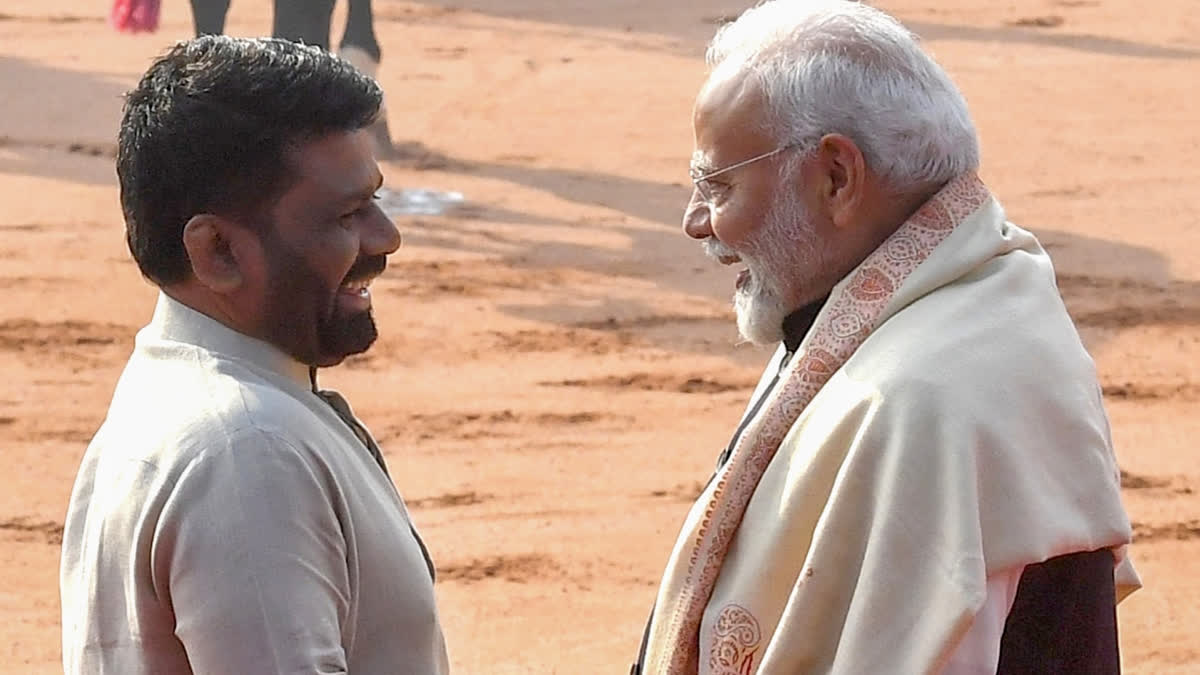New Delhi: In a move that could reshape the energy landscape of South Asia, India may get to play a pivotal role in the development of a new oil refinery at Sri Lanka's Trincomalee Oil Tank Farms if the Indian Ocean island nation’s President Anura Kumara Dissanayake’s words are to go by.
“We suggested to India that we build a joint venture oil refinery,” Dissanayake told a public meeting in Sri Lanka on Sunday fresh after a state visit to China. “Discussions are underway. We have to refine oil (and) use the tanks and become a nation that exports fuel to the world. We can make it a good hub.”
The Trincomalee Oil Farm, located on the northeastern coast of Sri Lanka, holds significant strategic, economic, and geopolitical importance for India. This importance can be analysed from various perspectives, including energy security, regional influence, maritime security, and the historical and diplomatic ties between the two countries.
One of the primary reasons the Trincomalee Oil Farm is critical for India is its role in energy security. India has one of the largest and fastest-growing economies in the world, and energy is a key driver of that growth. The Trincomalee Oil Farm is located at a strategic maritime location that provides access to vital shipping routes. The oil storage facilities in Trincomalee can serve as a regional energy hub for India.
India’s interest in the oil farm stems from its need to maintain strategic petroleum reserves (SPR) in case of disruptions in oil supply. The farm could function as a backup or a storage facility for India to stockpile crude oil, which could be crucial during periods of geopolitical uncertainty, especially with the volatile situation in the Middle East, which supplies much of India’s crude oil. In the event of a supply chain disruption, such reserves would help mitigate the adverse impacts on India’s energy security.
Why Dissanayake’s statement about building an oil refinery in Trincomalee assumes significance is because it comes soon after his visit to China earlier this month during which China Petroleum and Chemical Corporation or Sinopec, the world’s biggest oil refiner, agreed to invest $3.7 billion to construct a state-of-the-art oil refinery with a capacity of 200,000 barrels per day in the southern Hambantota region.
While Sinopec's primary operations are based in China, the company also has a presence in several other countries, including Russia, Kazakhstan, Angola, Brazil, and other regions where it has exploration and production activities or refining and petrochemical operations.
Sinopec already has an overseas refining facility in Saudi Arabia, a major energy producer. The Yanbu Aramco Sinopec Refining Company (YASREF), a joint venture between Saudi Aramco and Sinopec is a world-class, full-conversion refinery that uses 400,000 bpd of Arabian heavy crude oil to produce premium transportation fuels.
However, when implemented, the project in Sri Lanka will become Sinopec’s first fully-owned refinery abroad. Sri Lanka, strategically located in the Indian Ocean, has attracted significant interest from international investors due to its geographical location, which is ideal for connecting Asia, Africa, and Europe. However, the country has faced various economic and energy challenges, including a heavy reliance on imported energy and infrastructure constraints. These factors have made it an attractive location for a new oil refinery project.
